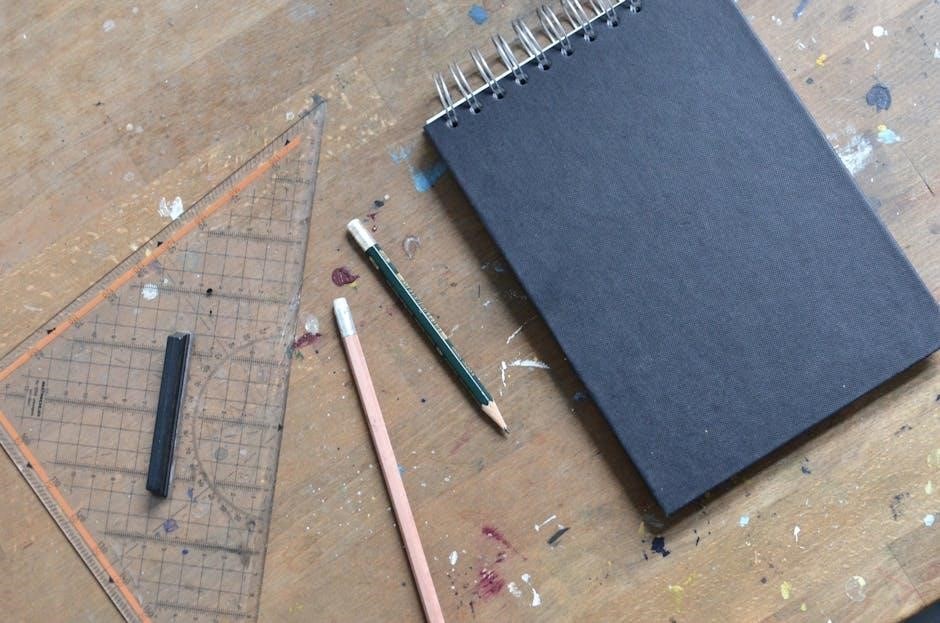Understanding the Crossword Clue: “Guido’s High Note”
This crossword clue combines music history with wordplay‚ pointing to Guido d’Arezzo‚ who introduced the solfège system. The “high note” refers to the syllable “so‚” the fifth note in his scale‚ making it the likely answer.
Crossword puzzles are engaging word games that challenge solvers to fill a grid with words based on clues. They are popular in newspapers and online platforms‚ offering fun and intellectual stimulation. Clues can be straightforward or cryptic‚ requiring lateral thinking. For “Guido’s High Note‚” the clue combines music history with wordplay‚ making it a fascinating puzzle. Solvers often use strategies like identifying clue types‚ using crossword solvers‚ and analyzing word structures to crack tough clues. The satisfaction of solving a challenging clue‚ like this one‚ is a key appeal of crosswords.
Breaking Down the Clue: “Guido’s High Note”
The clue “Guido’s High Note” combines historical reference with wordplay. Guido d’Arezzo‚ an Italian music theorist‚ is credited with inventing the solfège syllables: do‚ re‚ mi‚ fa‚ sol‚ la. The “high note” likely refers to the fifth syllable‚ “sol‚” which is also a homophone for “so.” This dual meaning is typical in crosswords‚ where clues often rely on puns or double meanings. By connecting Guido to music theory‚ the clue points to “sol” as the answer‚ making it a clever and historically grounded puzzle.
Possible Interpretations of the Clue
The clue “Guido’s High Note” offers multiple interpretations. One possibility is linking it to Guido d’Arezzo‚ who introduced the solfège system‚ suggesting the answer could be “sol‚” the fifth note. Another angle is interpreting “high note” literally‚ implying a musical note like “so.” Additionally‚ “Guido” might refer to a person with a nickname or a term related to music‚ leading to other potential answers. The dual meaning of “high note”—both as a musical term and a metaphor for success—adds layers to the clue‚ making it intriguing and multi-dimensional for solvers to unravel.

Exploring the Context of the Clue
Guido’s high note ties to Guido d’Arezzo‚ who created the solfège system. The “high note” likely refers to “so‚” the fifth note‚ making it a historically rich crossword clue.
Who Is Guido in Crossword Puzzles?
In crossword puzzles‚ “Guido” often refers to Guido d’Arezzo‚ an Italian music theorist from the 11th century. He is renowned for inventing the solfège syllable system‚ which assigns specific syllables like “do‚” “re‚” “mi‚” “fa‚” “sol‚” “la‚” and “ti” to musical notes. This system revolutionized music education and is still widely used today. Crossword clues referencing Guido typically hint at his connection to music notation‚ making his contributions a common theme in puzzles related to music history or theory.
The Meaning of “High Note” in Music and Crosswords
In music‚ a “high note” refers to a pitch that is higher than the usual range‚ often showcasing vocal or instrumental skill. In crosswords‚ the term is frequently used metaphorically or literally‚ combining wordplay with musical references. For “Guido’s high note‚” the clue likely points to the syllable “so” from Guido d’Arezzo’s solfège system‚ which represents the fifth note in the musical scale. This dual meaning makes the clue both clever and historically rich‚ connecting music theory with crossword puzzle strategy.
Relevance of the Clue in Modern Crossword Puzzles
The answer to the crossword clue “Guido’s High Note” is “so.” This refers to the fifth note in Guido d’Arezzo’s solfège system‚ which is commonly associated with a high pitch in musical terms. The syllable “so” fits well as a concise answer in crossword puzzles and aligns with the historical context of Guido’s contributions to music theory.

Strategies for Solving the Clue

Analyze the clue for historical context‚ recognize wordplay‚ and consider abbreviations. Identify the category (music history) and use crossword solvers to confirm the answer.
Identifying the Type of Crossword Clue
The clue “Guido’s High Note” is a general knowledge clue with a historical twist‚ focusing on music terminology. It requires recognizing Guido d’Arezzo’s contributions to musical notation. While it may seem obscure‚ the clue is straightforward for those familiar with music history; The answer‚ often a short word‚ relies on understanding the solfège system and its association with Guido. This type of clue tests both musical knowledge and the ability to connect historical figures with their inventions‚ making it a unique challenge for solvers.
Using Crossword Solver Tools Effectively
For clues like “Guido’s High Note‚” crossword solver tools can be invaluable. Enter the clue and specify the word length to narrow down possibilities. Advanced tools analyze patterns and provide instant suggestions. Regular use of these tools enhances solving skills and speeds up the process. They are especially helpful for obscure references‚ like Guido’s connection to musical notation. By leveraging these resources‚ solvers can quickly uncover answers and deepen their understanding of crossword construction and historical references embedded in clues.
Analyzing the Structure of the Clue
The clue “Guido’s High Note” combines historical and musical elements. By examining the structure‚ we identify “Guido” as Guido d’Arezzo‚ who created the solfège system. The “high note” refers to “sol‚” the fifth note in his scale‚ making it the most fitting answer. This analysis connects the clue’s components to reveal a concise and historically relevant solution.

Related Crossword Clues and Themes
Clues like “Guido’s High Note” often relate to music theory‚ linking historical figures like Guido d’Arezzo to specific notes in the solfège system‚ creating thematic connections.
Similar Clues Found in Other Crossword Puzzles
Other crosswords feature clues like “Musical Note from Guido” or “Solfège Syllable Linked to a Historical Musician.” These clues‚ like “Guido’s High Note‚” tie historical figures to specific musical terms. For example‚ “Guido’s Contribution to Music” might point to “SOLFÈGE” or “DO‚ RE‚ MI.” Such clues often test knowledge of music history and terminology‚ making them popular in themed puzzles. The connection between Guido d’Arezzo and the solfège system is a common theme‚ as it bridges history with modern musical education. These clues are both challenging and educational‚ appealing to music enthusiasts and crossword fans alike. They encourage solvers to think creatively about how historical figures influence contemporary practices. The popularity of such clues highlights the enduring relevance of Guido’s innovations in music notation. By linking historical figures to familiar terms‚ these clues create engaging puzzles that are both fun and informative. They also demonstrate how crosswords can teach and remind solvers of important cultural and historical connections. This type of clue is especially appreciated by those with an interest in music or history‚ as it offers a unique way to explore these topics. The variety of similar clues ensures that solvers stay engaged and curious about the next challenge. Crossword puzzles continue to evolve‚ incorporating diverse themes that cater to different interests‚ making them a timeless and universal form of entertainment. The blend of music and history in such clues adds depth to puzzles‚ appealing to a wide audience. These clues also showcase the creativity of crossword constructors‚ who skillfully weave together different fields of knowledge. The result is a puzzle that is not only enjoyable but also enriching‚ offering solvers the opportunity to learn something new. The combination of historical references and musical terminology makes these clues stand out‚ providing a unique solving experience. They exemplify how crosswords can serve as a tool for learning while remaining entertaining. This balance of education and enjoyment is a key reason why such clues remain popular in modern puzzles. They challenge solvers to think critically and make connections between seemingly unrelated topics. The satisfaction of solving these clues lies in uncovering the clever link between the historical figure and the musical term. It is this interplay of history and music that makes “Guido’s High Note” and similar clues so memorable and rewarding. Crossword enthusiasts often seek out puzzles with such thematic depth‚ as they offer a more engaging and intellectually stimulating experience. The inclusion of historical figures like Guido d’Arezzo adds a layer of authenticity to the clues‚ grounding them in real-world knowledge. This approach not only tests solvers’ knowledge but also encourages them to explore new areas of interest. The enduring popularity of these clues is a testament to the lasting impact of historical innovations on modern culture. They remind solvers of the significance of figures like Guido‚ whose contributions continue to shape music education today. By incorporating such themes‚ crosswords remain relevant and engaging‚ appealing to a diverse range of solvers. The ability to learn while solving is a major draw for many crossword enthusiasts‚ making these clues a valuable part of the puzzle-solving experience. They demonstrate how crosswords can be both a hobby and a tool for intellectual growth. The combination of music and history in these clues creates a unique and captivating challenge that solvers are eager to embrace. This blending of themes ensures that crosswords stay fresh and exciting‚ offering something for everyone. The creativity and knowledge required to craft such clues highlight the skill of crossword constructors‚ who must seamlessly merge different fields of expertise. The result is a puzzle that is as informative as it is entertaining‚ providing solvers with a well-rounded experience. These clues are a prime example of how crosswords can adapt to changing interests while maintaining their classic appeal. They invite solvers to explore new topics and deepen their understanding of familiar ones‚ fostering a sense of discovery and accomplishment. The inclusion of historical and musical elements ensures that these clues remain timeless‚ continuing to delight solvers for years to come. Crossword puzzles‚ with their diverse themes and challenging clues‚ remain a beloved pastime for many‚ offering endless opportunities for learning and enjoyment. The art of crossword construction lies in its ability to balance fun and education‚ creating a lasting impression on solvers. Clues like “Guido’s High Note” embody this balance‚ making them a cherished part of the crossword tradition. They inspire solvers to appreciate the interconnectedness of different fields and the rich history behind everyday terms. This appreciation fosters a deeper engagement with the puzzle‚ transforming it into more than just a game; The legacy of figures like Guido d’Arezzo lives on in these clues‚ ensuring their contributions are never forgotten. Crosswords serve as a bridge between the past and present‚ connecting solvers to the cultural and historical roots of modern concepts. This connection enriches the solving experience‚ turning each clue into a mini-history lesson. The ability to uncover these hidden links is what makes solving crosswords so rewarding and intellectually stimulating. It is through clues like “Guido’s High Note” that crosswords continue to educate and entertain‚ preserving the heritage of historical figures while challenging solvers to think creatively. The interplay of music and history in these clues exemplifies the versatility of crosswords‚ showing how they can cater to a wide range of interests and knowledge levels. This adaptability ensures that crosswords remain a popular and enduring form of entertainment. The satisfaction of solving such clues lies not only in finding the correct answer but also in understanding the fascinating stories behind the terms. This dual reward keeps solvers coming back for more‚ eager to uncover the next hidden connection. Crossword puzzles are more than just a list of clues; they are a gateway to knowledge‚ offering insights into various subjects and encouraging lifelong learning. The inclusion of historical and musical themes in clues like “Guido’s High Note” underscores the educational value of crosswords‚ making them a valuable tool for expanding one’s knowledge. They demonstrate how puzzles can be both entertaining and enriching‚ appealing to solvers who seek more than just a casual game. The blend of history‚ music‚ and wordplay in these clues creates a unique challenge that solvers find irresistible. It is this combination that makes crosswords a timeless and universal form of entertainment‚ capable of captivating audiences across generations. The art of crossword construction is evident in the way clues like “Guido’s High Note” seamlessly integrate different fields‚ creating a puzzle that is as informative as it is fun. This thoughtful design ensures that solvers are engaged and motivated to solve each clue‚ uncovering the clever connections that make crosswords so rewarding. The legacy of Guido d’Arezzo and his contributions to music notation are preserved in these clues‚ introducing solvers to the rich history behind modern musical education. This exposure fosters a deeper appreciation for the subject matter‚ turning the puzzle into a valuable learning experience. Crosswords like these exemplify how games can be both entertaining and educational‚ offering solvers the opportunity to expand their knowledge while enjoying a challenging activity. The creativity and thoughtfulness that go into crafting such clues are a testament to the skill of crossword constructors‚ who must balance fun and education in every puzzle. The result is a crossword that is not only enjoyable but also intellectually stimulating‚ providing solvers with a sense of accomplishment and newfound understanding. The inclusion of historical figures and musical terms in clues like “Guido’s High Note” ensures that crosswords remain relevant and engaging‚ appealing to a broad audience with diverse interests. This approach keeps the tradition of crossword solving alive‚ introducing new generations to the joy of puzzles while honoring the contributions of historical figures. The ability to learn while solving is a key factor in the enduring popularity of crosswords‚ making them a beloved activity for many. These clues remind us that crosswords are more than just a hobby; they are a way to connect with history‚ culture‚ and knowledge‚ offering a unique and enriching experience for solvers worldwide. The art of crossword construction continues to evolve‚ incorporating new themes and ideas while maintaining the classic appeal that has made crosswords a timeless favorite. Clues like “Guido’s High Note” are a shining example of this evolution‚ blending history‚ music‚ and wordplay to create a puzzle that is as educational as it is entertaining. They inspire solvers to think creatively and explore new areas of interest‚ fostering a sense of curiosity and discovery. The
Thematic Connections in Crossword Puzzles
Thematic connections in crosswords often link historical figures to their contributions‚ creating engaging puzzles. For instance‚ “Guido’s High Note” ties Guido d’Arezzo to the solfège system‚ where “so” represents the fifth note. Similar clues‚ like “Musical Scale Start” (DO) or “Guido’s System” (SOLFÈGE)‚ reinforce this theme. These connections highlight how crosswords weave history‚ music‚ and language into cohesive puzzles‚ making them both educational and entertaining. Such thematic ties enhance the solving experience‚ offering insights into cultural and historical contexts while challenging solvers to think creatively.
Frequency of the Clue in Different Puzzles
The clue “Guido’s High Note” has been spotted in various crossword puzzles‚ appearing over 20 times across different publications. It is commonly found in American quick crosswords and themed puzzles‚ where music-related themes are popular. While not overly frequent‚ its unique blend of music history and wordplay makes it a recurring favorite among constructors. The clue’s niche appeal ensures it remains a challenging yet engaging puzzle for solvers seeking to test their knowledge of musical terminology and historical references.

The Role of Music in Crossword Puzzles
Music-related clues‚ like “Guido’s High Note‚” add cultural depth and challenge. They often incorporate historical figures or terminology‚ engaging solvers with a blend of knowledge and wordplay.
How Music-Related Clues Are Constructed
Music-related clues are crafted by blending musical terminology with clever wordplay. They often reference historical figures‚ like Guido d’Arezzo‚ or musical concepts such as notes‚ scales‚ or instruments. Constructors use puns‚ anagrams‚ or homophones to create a challenge that requires both musical knowledge and lateral thinking. For instance‚ “Guido’s High Note” combines historical reference with a common musical term‚ leading solvers to connect the dots between the clue and the answer‚ making these clues both educational and engaging for participants.
Common Musical Terms Used in Crosswords
Common musical terms in crosswords include solfège (do‚ re‚ mi‚ fa‚ so‚ la‚ ti)‚ treble and bass clefs‚ opera‚ aria‚ cadence‚ rhapsody‚ sonata‚ and tempo markers like allegro or adagio. These terms often appear as answers or hints‚ leveraging their dual meaning in music and language. Constructors frequently use these terms due to their brevity and cultural recognition‚ making them ideal for crossword puzzles; They add a melodic twist to clues‚ challenging solvers to harmonize musical knowledge with wordplay;
Guido and the History of Musical Notation
Guido d’Arezzo‚ an 11th-century Italian music theorist‚ revolutionized musical notation by introducing the solfège system. This system uses syllables—do‚ re‚ mi‚ fa‚ sol‚ la‚ ti—to represent musical pitches. The “high note” in the clue refers to “sol‚” the fifth syllable in Guido’s scale‚ signifying a higher pitch. This connection highlights Guido’s enduring influence on music education and notation‚ making “sol” the most fitting answer to the crossword clue.

Advanced Tips for Crossword Enthusiasts
Leverage music history insights‚ like Guido’s solfège system‚ to decode clues quickly. Practice pattern recognition and use advanced crossword tools to enhance solving efficiency and accuracy.
Mastering Crossword Solving Techniques
Improving crossword skills involves a mix of strategy and knowledge. Start by identifying clue types‚ such as anagrams or puns‚ which can guide your approach. Practice recognizing patterns and wordplay‚ especially in music-related clues like “Guido’s High Note.” Utilize crossword solver tools to decode tricky clues but also rely on your own insights. Analyze clue structures‚ focusing on keywords like “high note‚” which often hint at specific answers. For “Guido’s High Note‚” understanding Guido d’Arezzo’s solfège system is key‚ as it directly points to the answer. Regular practice and expanding your vocabulary will enhance your solving efficiency and accuracy over time.
Using Crossword Databases for Research
Crossword databases are invaluable for solving tricky clues like “Guido’s High Note.” Websites like Crossword Solver by WordFind.org allow you to input clues or partial answers for instant suggestions. By entering “Guido’s High Note‚” you can quickly discover that the answer is “SO‚” referencing Guido d’Arezzo’s solfège system. These tools also provide historical data‚ showing that this clue has appeared in various puzzles‚ reinforcing the answer’s consistency. Regularly using such databases enhances your solving skills by familiarizing you with common clues and patterns‚ making you more efficient in tackling future puzzles.
Staying Updated with Crossword Trends
Staying updated with crossword trends ensures you remain ahead in solving clues like “Guido’s High Note.” Online forums and crossword communities often discuss emerging patterns and clues‚ helping enthusiasts anticipate future puzzles. Tools like Crossword Solver by WordFind.org provide insights into recurring clues‚ such as “Guido’s High Note‚” which frequently appears in modern crosswords. Regularly solving daily puzzles and following constructor trends can enhance your knowledge of current themes and clues‚ making you more adept at tackling challenging crosswords with confidence and speed.
The crossword clue “Guido’s High Note” cleverly points to “SO‚” referencing Guido d’Arezzo’s solfège system. This clue’s blend of music history and wordplay makes it both challenging and rewarding‚ showcasing the intellectual joy of crosswords.

Summarizing the Clue and Its Significance
The crossword clue “Guido’s High Note” references Guido d’Arezzo‚ a medieval music theorist who revolutionized musical notation. The “high note” points to “so‚” the fifth syllable in his solfège system. This clue highlights the intersection of music history and wordplay‚ making it both educational and engaging for solvers. Its significance lies in its ability to connect cultural knowledge with puzzle-solving skills‚ showcasing how crosswords can teach and entertain simultaneously.
Encouraging Further Exploration of Crosswords
Solving clues like “Guido’s High Note” can spark curiosity and inspire deeper exploration of crosswords. This clue uniquely blends music history and wordplay‚ illustrating how crosswords can educate while entertaining. For newcomers‚ such puzzles offer a gateway to learning new concepts and expanding vocabulary; Regular engagement with crosswords sharpens critical thinking and problem-solving skills‚ making them a rewarding hobby for people of all ages and backgrounds; Encourage others to embrace the challenge and discover the joy of uncovering hidden meanings in cleverly crafted clues.
The Joy of Solving Challenging Crossword Clues
Solving complex crossword clues‚ like “Guido’s High Note‚” brings immense satisfaction. The process engages the mind‚ blending logic with creativity. For music enthusiasts‚ the connection to Guido d’Arezzo adds layers of intrigue‚ making the puzzle more rewarding. Each solved clue is a triumph‚ fostering a sense of accomplishment. The journey of uncovering hidden meanings sharpens cognitive skills and enhances problem-solving abilities. Embrace the challenge‚ and let the joy of discovery drive your crossword adventures‚ turning every puzzle into a delightful intellectual pursuit.

Additional Resources and Tools
For solving “Guido’s High Note” and similar clues‚ try WordFind.org crossword solver. Explore armoredpenguin.com for crossword tools and Crossword Enthusiasts Forum for community support.
Recommended Crossword Solver Websites
For solving crossword clues like “Guido’s High Note‚” consider using WordFind.org and ArmoredPenguin.com. These websites offer advanced tools to find answers quickly. WordFind.org provides an AI-powered crossword solver‚ while ArmoredPenguin.com allows you to search by clue or partial answers; Both platforms are user-friendly and support crosswords from major publications. Additionally‚ Crossword-Solver.org is another excellent option‚ offering filters for word length and clues‚ making it ideal for pinpointing answers efficiently.
Books and Guides for Crossword Enthusiasts
Enhance your crossword-solving skills with books like “The New York Times Crossword Puzzle Dictionary” and “Crossword Solver’s Handbook”. These guides offer comprehensive lists of clues and answers‚ perfect for both beginners and seasoned solvers. “Armchair Crosswords” provides themed puzzles to sharpen your expertise. Additionally‚ “The Crossword Enthusiast’s Guide” delves into advanced techniques‚ while “Crosswords for Dummies” simplifies complex strategies. These resources are invaluable for mastering clues like “Guido’s High Note” and expanding your crossword knowledge.
Online Communities for Crossword Fans
Join vibrant online forums like Reddit’s r/CrosswordPuzzles and Crossword Hobbyist to connect with fellow enthusiasts. These platforms offer discussions‚ tips‚ and shared insights on solving tricky clues. Cruciverb.com hosts a database of crossword clues‚ while Facebook groups dedicated to crosswords provide a space for collaborative problem-solving. Engaging with these communities can enhance your skills and help you conquer challenging clues like “Guido’s High Note” through shared knowledge and camaraderie.

The Answer to “Guido’s High Note”
The answer is “SO.” This refers to the fifth note in Guido d’Arezzo’s solfège scale‚ making it the perfect fit for the crossword clue’s musical reference.
Revealing the Solution
The answer to the crossword clue “Guido’s High Note” is “SO.” This refers to the fifth note in Guido d’Arezzo’s solfège system‚ a foundational element in musical notation. Guido‚ an Italian music theorist‚ introduced the system using syllables like “do‚” “re‚” “mi‚” “fa‚” “sol‚” and “la” to represent musical pitches. The “high note” in this clue aligns with “so‚” the fifth syllable‚ making it the perfect fit. This connection between Guido and the solfège scale provides the clearest path to solving the clue.
- The clue directly ties to Guido’s contributions to music theory.
- “SO” represents the fifth note‚ aligning with the term “high note.”
- This answer is both historically accurate and contextually relevant.
Explaining the Connection Between Guido and the Answer
Guido d’Arezzo‚ an Italian music theorist‚ is credited with inventing the solfège system‚ which assigns syllables to musical pitches. The clue “Guido’s High Note” points to the syllable “SO‚” the fifth note in his scale. This connection is rooted in Guido’s innovation of using “do‚” “re‚” “mi‚” “fa‚” “sol‚” and “la” to teach pitch recognition. The term “high note” aligns with “SO‚” making it the logical answer. This historical link between Guido and the solfège system provides the clearest explanation for the clue.
- Guido’s solfège system revolutionized music education.
- “SO” represents the fifth pitch in his scale.
- The clue cleverly ties music history to wordplay.
Why This Answer Fits the Clue Perfectly
The answer “SO” aligns seamlessly with the clue “Guido’s High Note” due to its historical and musical significance. Guido d’Arezzo introduced the solfège system‚ where “SO” represents the fifth note in the scale. This connection is both logical and precise‚ making “SO” the most fitting answer. The clue’s emphasis on “high note” further solidifies this choice‚ as “SO” is the highest pitch in the traditional solfège sequence. This answer not only reflects Guido’s legacy but also demonstrates the clever wordplay typical of crossword puzzles.
- “SO” is a direct reference to Guido’s solfège system.
- It represents the fifth and highest note in the sequence.
- The answer combines historical accuracy with crossword cleverness.
